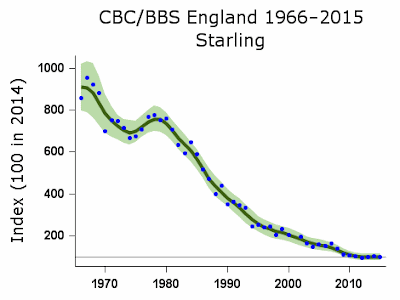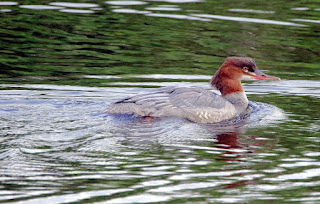The alarm clock buzzed at 0520. I was due to meet Andy and Bryan at 0630 for another ringing session near Oakenclough. The weather forecast of a 2mph wind with no rain proved to be accurate and we enjoyed an eventful morning of both ringing and birding. Three pairs of eyes and ears proved extremely useful during the usual lulls in ringing.
After an initial round of Great Tits, Coal Tits, a Blue Tit and just a single Willow Warbler it seemed as if the session might be below par for this always productive site. But within an hour the species changed when visible migration began, and after five hours we had caught 51 birds of 10 species.
While no two ringing sessions are ever the same it was finches top of the leader board again with yet more Goldfinch and Lesser Redpoll. We had handfuls of both Willow Warbler and Chiffchaff together with another Tree Pipit.
Totals - 14 Goldfinch, 8 Lesser Redpoll, 6 Willow Warbler, 5 Goldcrest, 4 Chiffchaff, 4 Chaffinch, 4 Coal Tit, 3 Great Tit, 1 Long-tailed Tit, 1 Blue Tit and 1 Tree Pipit.
Willow Warbler
Long-tailed Tit
The Ringing Office
Lesser Redpoll
Tree Pipit
Birding proved very interesting and began with our second Osprey of the week. This one followed a similar route to the one on Friday last by flying North to South alongside Harris End Fell before disappearing from view. Seven Grey Herons appeared together from the south, circled for a while before they lost height and dropped to the north and towards the fisheries near Scorton.
Other raptors seen – 2 Sparrowhawk,1 Kestrel and 9 Buzzard. The Buzzards appeared late in the morning as a “kettle” of 7 plus 2. Three Ravens added to the action on high.
We noted a steady stream of high-flying hirundines with Swallows to the fore. 60+ Goldfinch and 30+ Chaffinch dominated the arriving finches where Lesser Redpolls seemed less vocal than normal. We were a little surprised to catch nine redpolls when so few seemed to be around.
An initial count of 5 or 6 Mistle Thrushes turned into a massive 29 when two parties that arrived unseen at the North West corner of the site took to the sky flying east. As the thrushes spread out we counted a flock of 22 and then a gang of 7, all heading the same way.
It’s often in September that people mistakenly report Fieldfares arriving early in the UK, when in fact Fieldfares do not really arrive here from Scandinavia until late September/October. What those observers have actually seen is a far less common but not unknown flock of Mistle Thrushes. Just last week a local birder, Bryan Yorke saw over 80 Mistle Thrushes in the hills north of Lancaster.
Mistle Thrush
Seems like our largest UK thrush has enjoyed a good breeding season!
Other birds noted in the plantation – a single Nuthatch and 2 or more Bullfinch.
Linking today to Eileen's Saturday.
Linking today to Eileen's Saturday.






























































.JPG)






.jpg)











